Two years after the founding of the Provincetown Art Association, a group of men, mostly artists, met the summer of 1916 in a small building on what was then Knowles Wharf and The Beachcombers was established as a social club.
A century later, the group continues, and the Provincetown Art Association and Museum celebrates them in the exhibit “To Promote Good Fellowship: A Centennial Exhibition of Early Work from The Beachcomber’s Club, 1916–1976,” which runs through April 24.
Today, The Beachcombers meet in what was once a sail and rigging loft on a wharf at the foot of Bangs Street, which they bought in 1918.
“In the early days, The Beachcombers supported itself by producing minstrel shows and theatrical and musical events,” artist Bill Evaul says in the exhibition catalogue.
But when the town’s entertainment industry grew in the 1960s, there was a lot more competition.
“Ever up to the task of revelry,” Evaul writes, “the Beachcombers were content to settle into a long period of Saturday night conviviality, with guaranteed good drink, the possibility of a good meal, and not too much worry about how to survive.”
He adds: “Games of chess, billiards, ping-pong or cards are common. Members relax, sharing a drink, a cigar, and conversation with compatriots or interesting guests. At any point it would not be unusual to see someone sketching the scene.”
As co-curator Maura Coughlin writes in the catalogue, the exhibition “highlights the importance of the Beachcombers Club as an institution that has helped to sustain the vitality and resilience of an artistic community.”
Many of the artists, who became part of the Beachcombers, were drawn to Provincetown to study at Charles Hawthorne’s Cape Cod School of Art, which was established in 1899 and launched the Provincetown art colony. The exhibition focuses on those artists.
A founding member of the Provincetown Art Association, Hawthorne frequently painted the fishermen and their families. His 1905 “Still Life with Fish” is an example of his oil paintings done in a tonal, academic tradition, which is different from his approach to teaching, which focused on the effects of light, creating shapes with color, and building a composition, not by details, but by relating one color to another.
Edwin Dickinson studied with Hawthorne and was an important member of the colony. He painted many landscapes in a limited range of colors—greens, grays, blues and browns— as seen in his 1928 “Provincetown Harbor, Railroad Wharf in the Rain.” Dickinson straddled 19th-century American romantic traditions and the more inventive European approaches. Leaning toward a freer approach to his subjects and composition, he, along with Ross Moffett, was among those championing artistic innovations in Provincetown during the early years.
Many of Moffett’s paintings are devoted to depicting Provincetown’s streets and the townspeople, the sea and the beaches, the harbor and fishing boats. His work, which has a primitive quality and somber mood, is noted for simplified figures and distortions, which express the struggles and toil of the Portuguese fisherman and farmers, as in “The Wreck of the Thistlemore.”
Although part of the conservative group of painters in the early years, Gerrit Beneker took an impressionistic turn with his landscapes and marine paintings. His glittering 1914 “Under the Wharf” is an example of the impressionistic style of many artists at the time.
Several artists were proponents of modernism. Oliver Newberry Chaffee’s early paintings were impressionistic, but after studying in Paris and seeing the work of the Fauves and Picasso, his work evolved. Forced to abandon Paris during World War I, he was in Provincetown in 1914, in time to participate in the founding of the Provincetown Art Association. His exuberant works are dominated by simplified forms and sinuous outlines, as in his 1924 “Caliga’s Studio.”
Arthur Cohen divided his time between New York and Provincetown and painted both places. A student of Edwin Dickinson, you can see that influence in his work. Cohen painted serene images of Provincetown’s shoreline, its harbors and boats. His 1968 “Cape Cod Wharf” is a fine example of the calm and gentle quality that is created with mostly muted colors, soft brushstrokes and a veil of time.
Contemporary painter Salvatore Del Deo, who settled in Provincetown in 1953, paints a wide range of subjects. His scenes of Provincetown, include the life of a small town, and, in particular, the fishermen, their boats, and the activity at the wharf. His 1969 “Cape Cod Cold Storage” is an example of his bold style and intense colors that express the energy and dynamic rhythms of the fishing community.
The Beachcombers may have cavorted when they met, eating, drinking and socializing, but as evidenced from this exhibit they were serious painters in love with Provincetown.
“To Promote Good Fellowship: A Centennial Exhibition of Early Work from The Beachcomber’s Club, 1916–1976” runs through April 24 at the Provincetown Art Association and Museum, 460 Commercial St., Provincetown. For information, you may call 508-487-1750; online at www.paam.org.
–By Debbie Forman




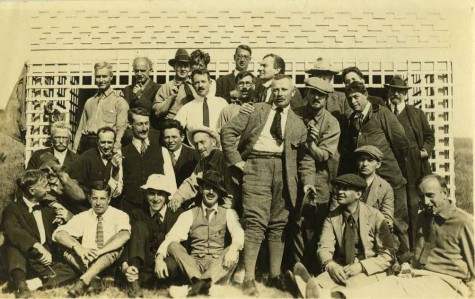
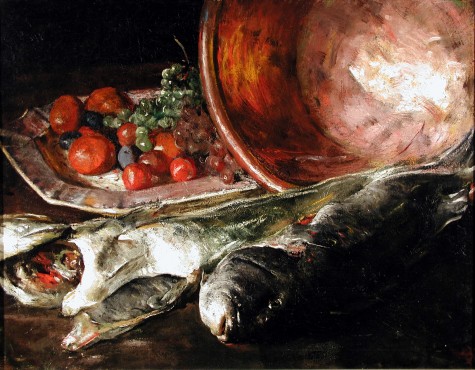
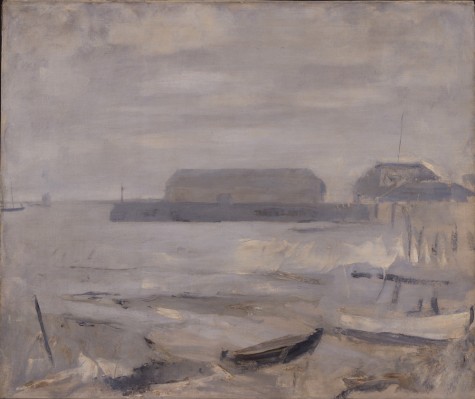
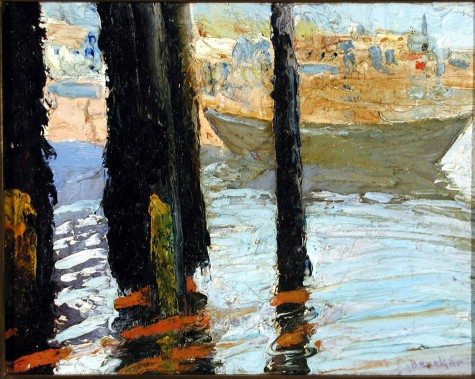
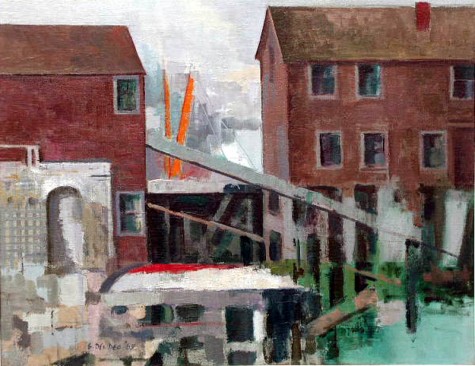






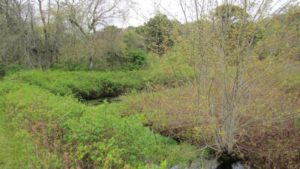

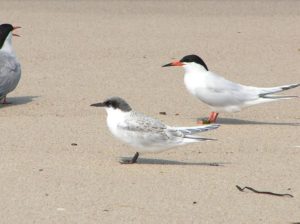

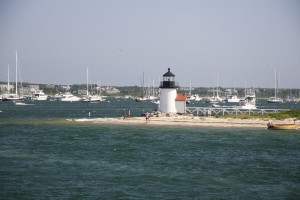









I knew Sal when i was 19 and worked in Ciro and Sals restaurant in bare feet. We served unpretentous and delicious Italian food. I have the happiest memories of my youth and working there especially Sal,s father. Just read about Jo’s death in the New York Times. Both Sal and Jo were destined for greatness and they left a great legacy for all of us to enjoy. Lois Titherington